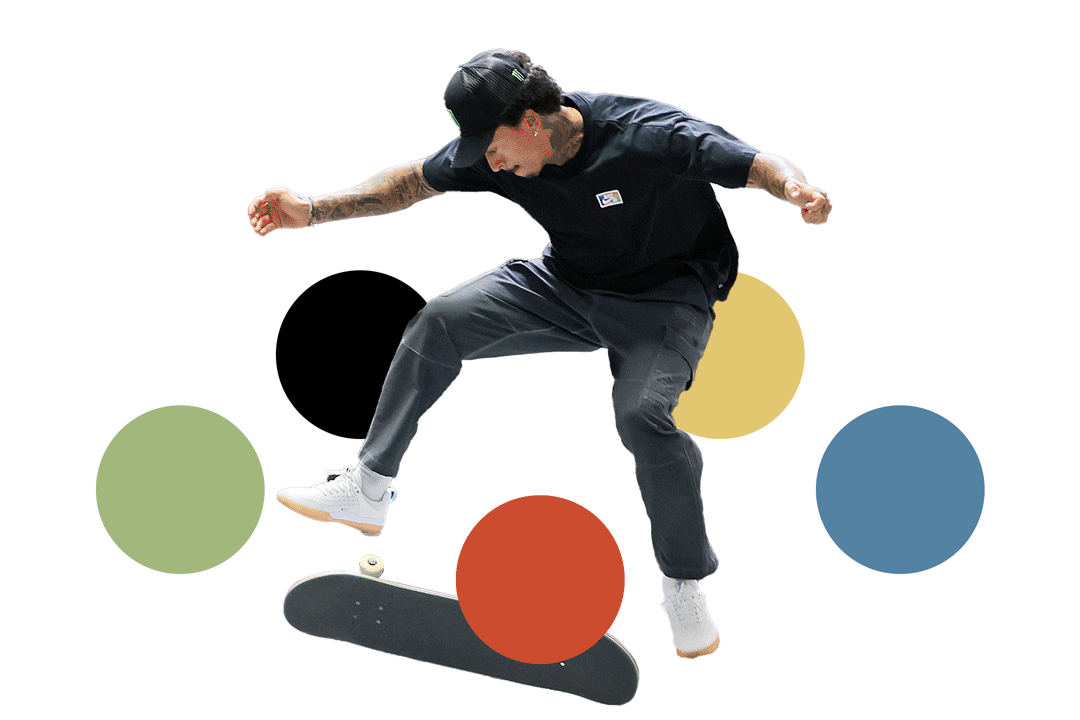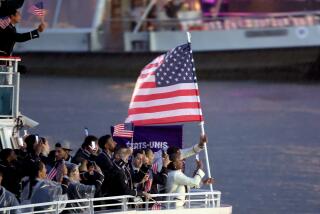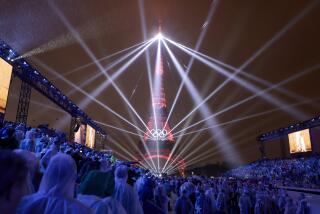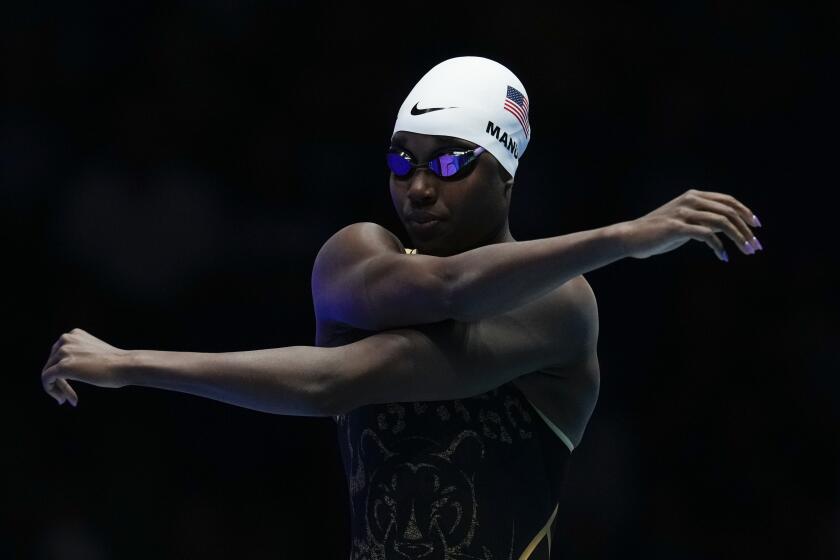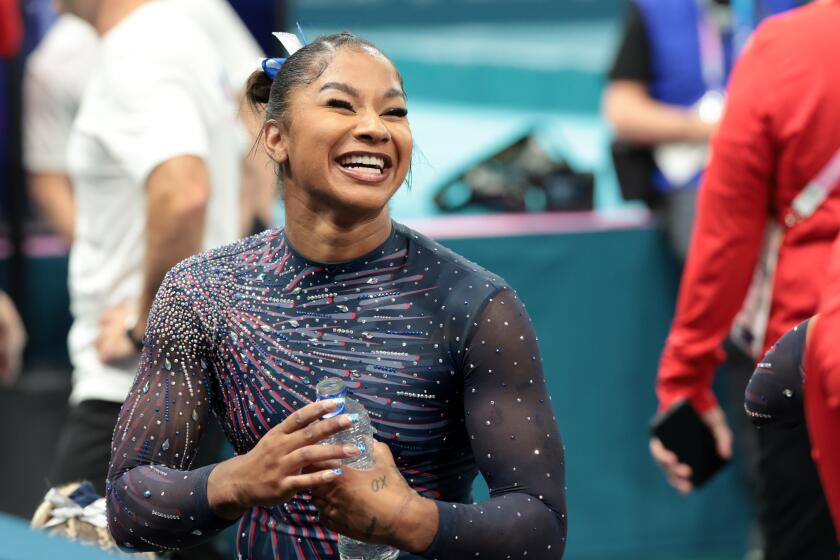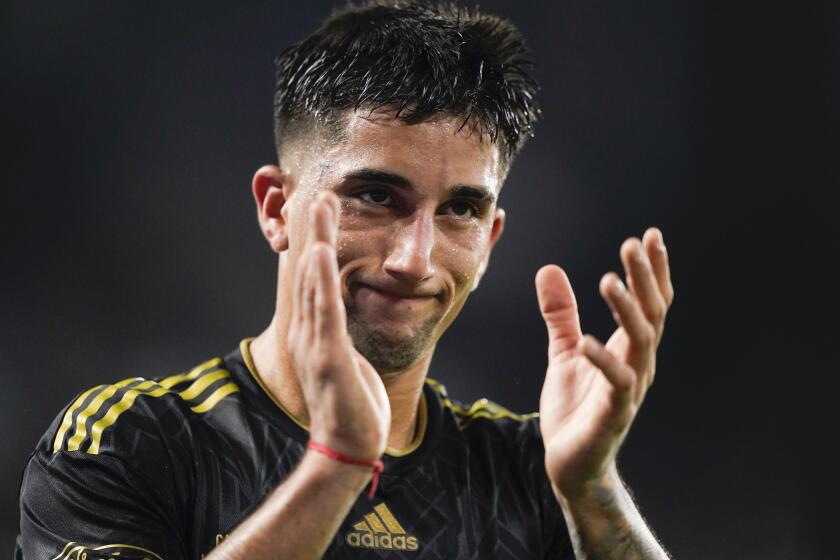IT WAS ‘BU WHO?’ : Aztecs Saw Their Hopes of ‘Big Time’ Go Awry
The last time San Diego State participated in a bowl game, Aztec players and fans were in an uproar over the competition.
They were hoping to gain national recognition by playing a big-name eastern school such as Navy in the 1969 Pasadena Bowl. Instead, they played Boston University, not to be confused with Boston College.
San Diegans were so upset over playing Boston University that a local newspaper ran the headline “BU Who?”
“We thought we’d get a real good opponent and break into the big time,” said wide receiver John Featherstone, now coach at El Camino College. “What happened is that nobody wanted to play us and take a chance of losing to us. They took one look at our offense and said, ‘No thank you.’ ”
The Aztecs had finished 10-0 in the regular season, outscoring their opponents, 464-187. Coach Don Coryell wanted his team to run up the score in those days to gain recognition.
Quarterback Dennis Shaw threw nine touchdowns in one game against New Mexico State, six to tight end Tim Delaney. Shaw and Delaney still hold NCAA records for touchdown passes and receptions from that game.
However, both were slowed by injuries during the Pasadena Bowl. In their places emerged such players as quarterback Brian Sipe and Featherstone.
Sipe threw two touchdown passes to Featherstone, the game’s most valuable offensive player, as SDSU won, 28-7. Lineman Bill Van Leeuwen was the game’s most valuable defensive player.
The Aztecs had become a major college team for the first time in 1969 by joining the newly formed Pacific Coast Athletic Assn. Each year, the conference’s champion was going to play an at-large team in the Pasadena Bowl.
Cal State Long Beach won the PCAA in 1970 and San Jose State won in 1971. Then, the Pasadena Bowl folded.
Seventeen years later, members of the 1969 Aztecs remember their team as one of diverse personalities. There were numerous happy-go-lucky players, and there were serious ones.
Nobody on the team gained as much off-the-field recognition as center Bill Pierson.
In 1968, a group of Vietnam War protesters at SDSU had planned to take down an American flag on campus and tear it up. But Pierson, a Vietnam veteran, stood in front of the flag pole and his presence deterred the protesters.
Today’s best-known player from the 1969 Aztecs is linebacker Carl Weathers, who played Apollo Creed in the “Rocky” movies.
“He was a serious drama student even when he was a football player,” said linebacker Donnie Rea, now an assistant coach at USC. “All he did in the shower was recite Shakespeare and sing his next part in the play. What you see him as in Apollo Creed is the guy I remember. He was a guy who was absolutely live at all times. If it was quiet, you knew he wasn’t around.”
Weathers’ personality typified the defense, which was nicknamed The Wild Bunch, for its activities both on and off the field.
Off the field, most defensive players were noted for their sanguine personalities.
On the field, they played with reckless abandon. The Aztecs had a small but quick defensive line that included Van Leeuwen (5-feet 10-inches, 210 pounds) and Tim Burnett (6-1, 210).
Van Leeuwen and Burnett were primary characters among The Wild Bunch, according to defensive back Galen Pavelko, who had transferred to SDSU from UCLA.
“When you played at UCLA, you came to practice with your chin strap buckled and your shoulder pads on,” said Pavelko, now a construction worker. “When I came to San Diego State, it was a culture shock. The first day of practice, here came Burnett and Van Leeuwen riding their motorcycles in tandem. They were carrying their shirts and shoulder pads. At UCLA, you didn’t do those things. It set the mood for a different environment.”
Though SDSU was not highly recognized in those days, it had plenty of pro prospects. Four seniors from the 1969 team were NFL draftees, and six juniors were drafted the next year.
The list:
--Class of 1969: Dennis Shaw, Buffalo, second round; defensive back Billie Hayes, Cincinnati, fourth round; defensive lineman Lon Woodard, New Orleans, seventh round; Pierson, New York Jets, 12th round.
--Class of 1970: Wide receiver Ken Burrow, Atlanta, second round; offensive linemen Henry Allison and Tom Shellabarger, Philadelphia, fifth round; defensive back Tom Hayes, Atlanta, sixth round; defensive lineman Leon Van Gorkum, Chargers, eighth round; running back Lindsey James, Atlanta, 16th round.
The Aztecs had five full-time coaches in those days, all of whom were still active at the beginning of the 1986 season.
Their position with the Aztecs and their current status: Coryell, head coach, resigned from the Chargers midway through this season; Rod Dowhower, offensive backfield coach, fired as the Indianapolis Colts’ head coach a month ago; Claude Gilbert, defensive coordinator, head coach at San Jose State; Ernie Zampese, defensive backfield coach, Chargers’ offensive coordinator, and Al Baldock, defensive line coach, head coach at Taft College.
In 1969, Coryell’s offense was considered to be years ahead of everyone else. The Aztecs, a passing-oriented team, ran formations that were foreign to most defenses.
“We did things in those days that people are just starting to do now,” Featherstone said. “We ran a lot of single-back formations and spread people out.”
The Aztecs had their most productive effort in the season’s eighth game, beating New Mexico State, 70-21.
Shaw set an NCAA record with his eighth touchdown pass in the third quarter and was removed from the game. Little did he know that he would be called upon again.
Tom Nettles, now a sportscaster in San Francisco, was a graduate assistant coach in 1969 and recalls the story:
“When Tim Delaney had five touchdowns, somebody in the booth told me he needed one more for an NCAA record. I told Coryell and he said, ‘Let’s get him back in.’ Brian Sipe was in there and had marched us to New Mexico State’s 15 or 20. When Tim went back in, everyone in the stadium knew he was in to catch a touchdown.
“On first down, Tim was well covered, and Brian’s pass was incomplete. On second down, Brian threw to someone else and Coryell went nuts. He put Dennis (Shaw) back in, and Dennis threw a touchdown to Tim. Coryell had this thing at the time about records. We needed to get records to get recognition.”
Two weeks after playing New Mexico State, SDSU needed to beat Long Beach to win the PCAA. Long Beach led at halftime, 32-14, but the Aztecs rallied to win, 36-32.
Burrow, SDSU’s leading receiver, did not suit up because of an ankle injury. But at halftime, he put on his uniform and decided to play the second half.
“All of our receivers were dinged up toward the end of the game,” said Shaw, now the Aztecs’ radio color commentator. “Ken Burrow went in and ran a corner pattern on my brother, Bryan, to win the game.”
The Aztecs also won their next game against Boston University in the Pasadena Bowl. Little did anybody know that it would be 17 years before SDSU would participate in another bowl game.
THE ’69 AZTECS SDSU 49, Cal State Los Angeles 0 SDSU 55, San Jose State 21 SDSU 24, West Texas State 14 SDSU 27, Texas Arlington 10 SDSU 55, UC Santa Barbara 13 SDSU 48, Fresno State 20 SDSU 58, Pacific 32 SDSU 70, New Mexico State 21 SDSU 42, North Texas State 24 SDSU 36, Cal State Long Beach 32 * SDSU 28, Boston University 7
More to Read
Go beyond the scoreboard
Get the latest on L.A.'s teams in the daily Sports Report newsletter.
You may occasionally receive promotional content from the Los Angeles Times.
